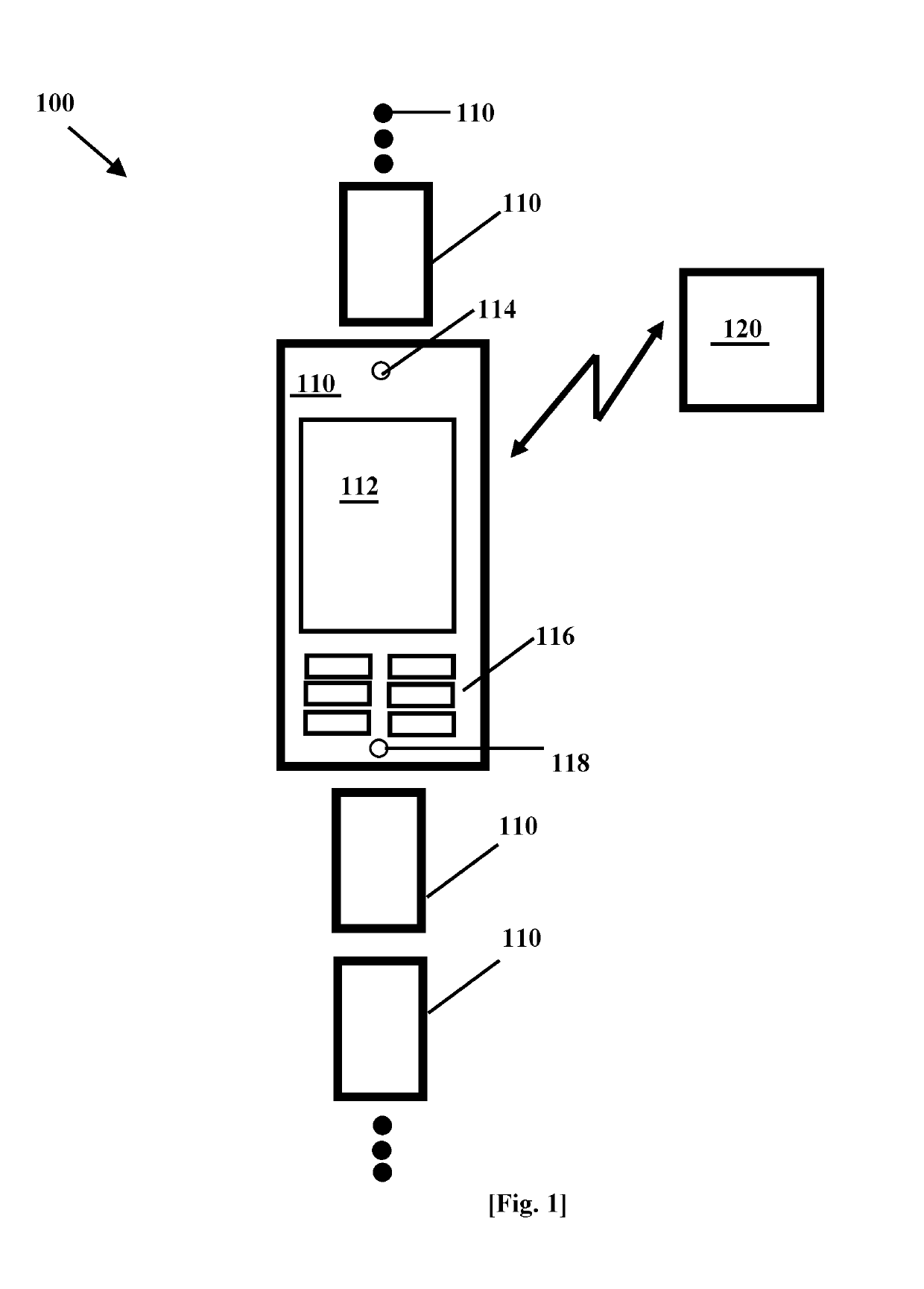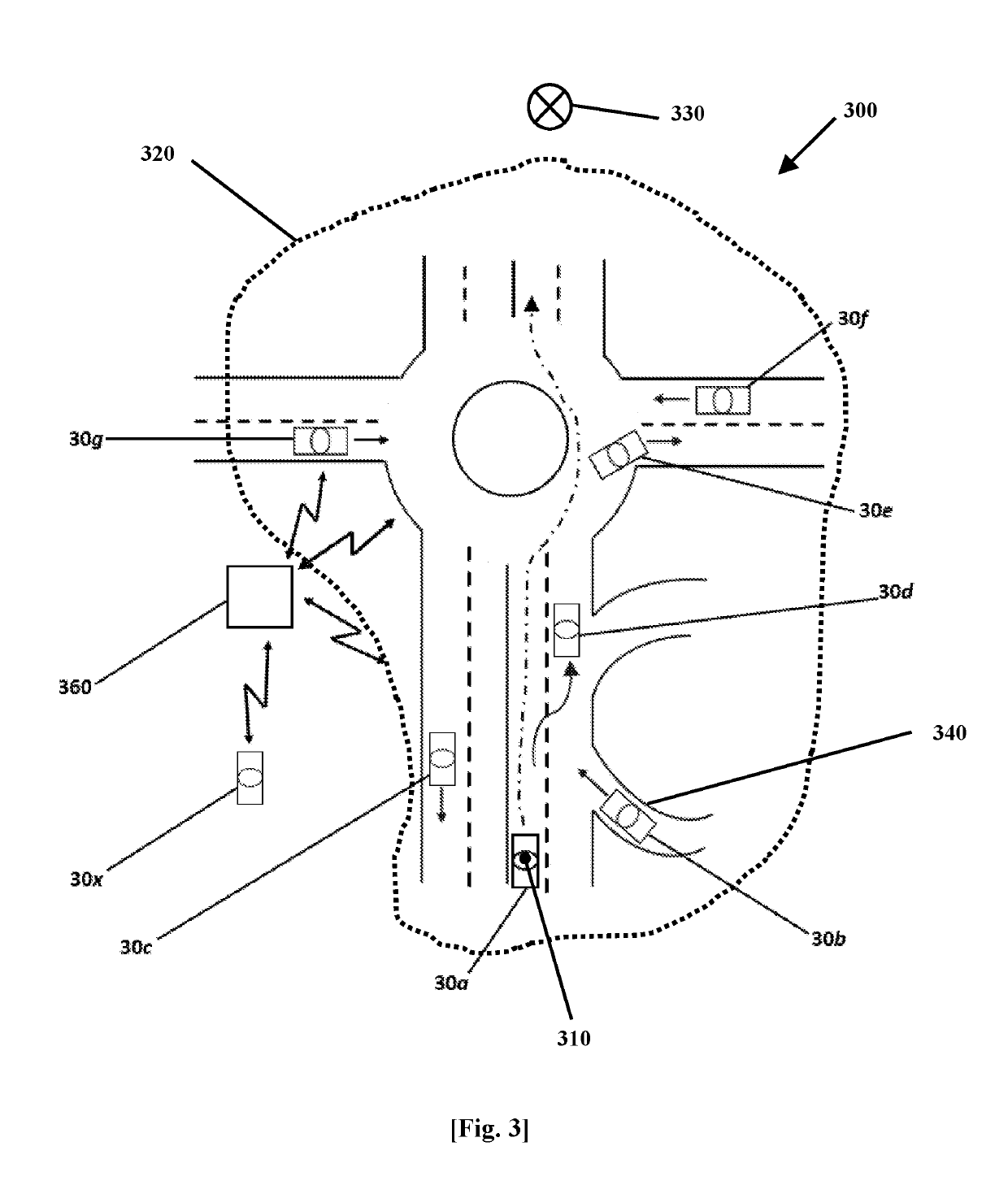System and Method for Real-time Transit Prioritization
- Summary
- Abstract
- Description
- Claims
- Application Information
AI Technical Summary
Benefits of technology
Problems solved by technology
Method used
Image
Examples
Embodiment Construction
[0018]In the following detailed description, numerous specific details are set forth in order to provide a thorough understanding of the invention. However, it will be understood by those skilled in the art that the present invention may be practiced without these specific details. In other instances, well-known methods, procedures, and components have not been described in detail so as not to obscure the present invention.
[0019]Referring now to the invention shown in FIG. 1, which is a schematic illustration of a system 100 for creation of a priority transit mapping according to some embodiments of the present invention.
[0020]System 100 may include a plurality of navigation devices 110, each of the navigation devices may belong to a member of a priority transit mapping service which may be provided by system 100. Navigation devices 110 may include, for example, GPS devices, mobile phones, Personal Digital Assistants (PDA), Personal Navigation Devices (PND), car personal computer (P...
PUM
 Login to View More
Login to View More Abstract
Description
Claims
Application Information
 Login to View More
Login to View More - R&D
- Intellectual Property
- Life Sciences
- Materials
- Tech Scout
- Unparalleled Data Quality
- Higher Quality Content
- 60% Fewer Hallucinations
Browse by: Latest US Patents, China's latest patents, Technical Efficacy Thesaurus, Application Domain, Technology Topic, Popular Technical Reports.
© 2025 PatSnap. All rights reserved.Legal|Privacy policy|Modern Slavery Act Transparency Statement|Sitemap|About US| Contact US: help@patsnap.com



